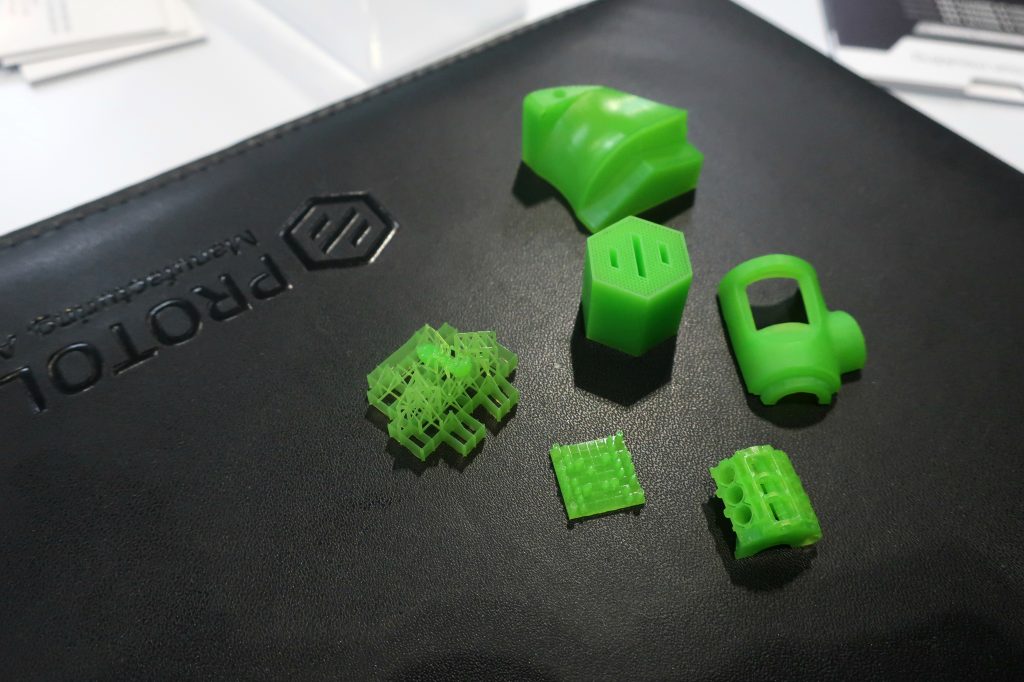3D printing is a growing business at Protolabs, as evidenced by its recent financial report for Q3 2019, published in October. Furthermore, throughout the year, the company has seen a number of new product additions to its 3D printing offering. In the second quarter, the company added a new DMLS metal 3D printing service to its portfolio. Following this, in the third quarter, it expanded its polymer offering with the addition of a Carbon DLS technology, and the availability of polypropylene for SLS. The addition of theses new technologies has been driven, reportedly, by customer demand, and the company is amidst a conscious effort to deliver more services that fulfill the end-use requirements of discerning customers.
Speaking to Greg Thompson, Global Product Manager for 3D Printing at Protolabs, earlier this year 3D Printing Industry learned more about the company’s additive manufacturing strategy. “At our core, we’re all about supporting our customers and financing our capabilities to meet more of their needs,” Thompson told me, “And that’s really what our strategy is on 3D printing.”

The importance of the digital thread
Echoing some of the statements made by company CEO Vicki Holt earlier this year, Thompson explained that key to Protolabs’ mission is a commitment to accelerating product development for customers, and “reducing the risk of optimizing their supply chain.” As an on-demand digital manufacturing service, continually at the forefront of all the latest 3D printing technologies, Protolabs in some ways offers customers a type of “try before you buy” experience. It also allows customers to only apply the technology where it makes sense to them, rather than buying an additive manufacturing system that may be under utilized.
Though prototyping remains a valuable application for the company, the current focus for Protolabs is in “production-ready” applications. This is in keeping with trends across the 3D printing industry as a whole, with the technology positioned as a central tenet to Industry 4.0.

Thompson commented, “We recognize that there are opportunities to expand our technologies, our materials [and] our capabilities for both prototype and, and production, and unlock uses and applications that weren’t available in 3D printing 5- 10 years ago that will be of need as we move forward in the future.” Some of the drivers Thompson cites in Protolabs’ 3D printing strategy include industry megatrends, for example, “the Internet of Things, big data analytics, connectivity.” “[…] all of that,” Thompson added “is driving, the digital thread to be more and more important, and then you layer on that the end customer’s desire for personalization, and customization,”
“[…] All of those megatrends really force the customers think differently about how they’ll do their product roadmaps; how they’ll do their product development, [and] how they bring them to market. And they have to come to market in a digital way to manage all of that increased complexity in supply chain, and [the] proliferation of offerings.”
Where is the industry heading?
To fulfill a promise of production-ready 3D printing technology, Protolabs knows that its not just about the technologies it uses. As detailed in a design for SLA and MJF article by Joe Cretella, Application Engineer at Protolabs in North Carolina, one of the capabilities that sets Protolabs apart from other service bureaus is that it develops its own build parameters for machines to achieve the best possible results. Another differentiation is the company’s material development. Recent 3D material releases from Protolabs include the MicroFine Green resin for SLA and CUNi2SiCR copper alloy for DMLS.

Speaking about the materials side of the business, Thompson said, “We’re highly interested in some of the advancements that are happening on the polymer side with improved material properties.” However, when it comes to a question of what leads development, Thompson explained, “To really answer that question, you’ve got to look at what the challenges are.”
Moving into production with 3D printing, Thompson highlighted several aspects for consideration:
“There’s a lot more concern around the economics, there’s a lot more concern around process control, and micro structure, and, you know, designers understanding when to use 3D printing, and when not to use 3D printing.”
“Those are the challenges that 3D printing is facing,” Thompson added, “And those are the themes that you see, both in the panel discussions and in the advancements, out on the [exhibition show] floor in the booths, around where is the industry heading.”
For this reason, Thompson said, “We’re as excited [about materials as we are] around some of the enhancements in machine speed, and efficiency, processing and post-processing, and removing some of the traditional challenges that exist within 3D printing.”
The next big event coming up for Protolabs is formnext 2019. Visitors to the show from 19th through the 22nd November are invited to the company’s exhibition at hall 11.1, booth C21.
The 3D Printing Industry team will be reporting live from the show this year. Follow all our coverage of Formnext and more by subscribing to the 3D Printing Industry newsletter and following us on Twitter.
Featured image shows Greg Thompson, Global Product Manager at Protolabs. Photo via Greg Thompson



